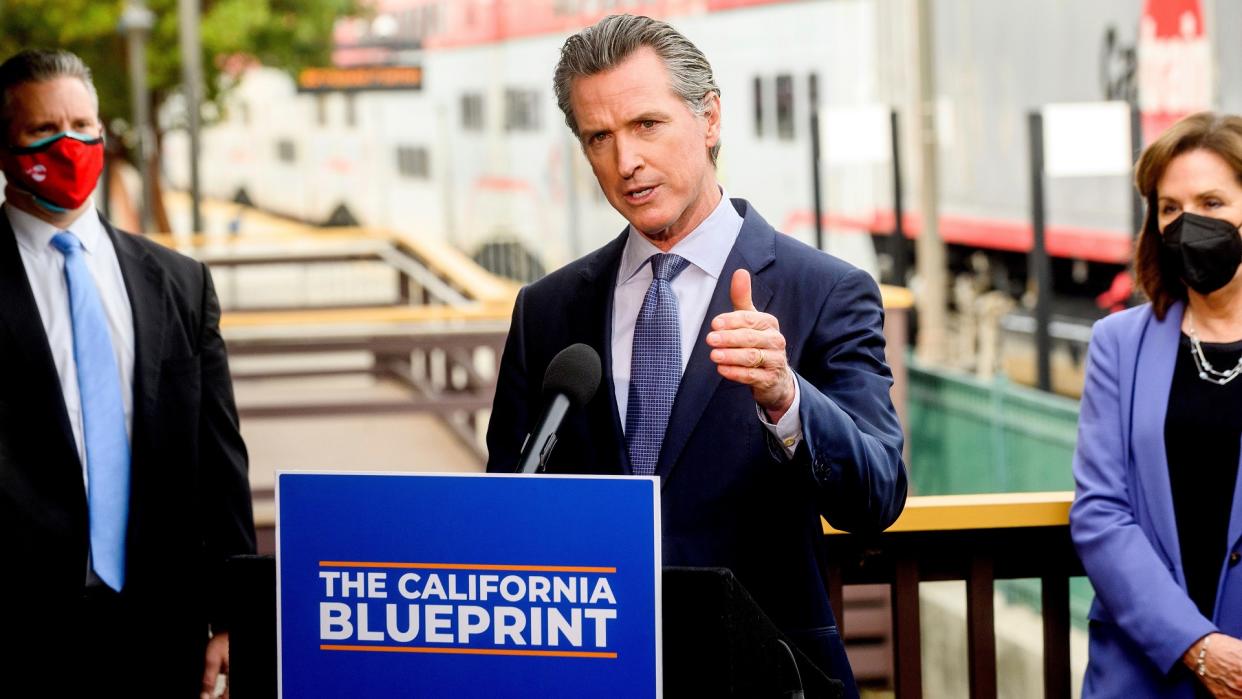Legislative Win Could Lead to Government-Funded Healthcare in California by 2024

A group of Democratic lawmakers in California recently introduced a sweeping, single-payer healthcare plan for all state residents that would be the first of its kind in the nation. The legislation, Assembly Bill 1400, passed scrutiny in an Assembly Health Committee hearing held Jan. 18 — if passed, the bill would have significant economic impact on both individuals and businesses.
See: 21 Hacks To Reduce Your Healthcare Costs This Year
Find: The Rise of Healthcare Stocks in 2021
The legislation stands as an alternative to Gov. Gavin Newsom’s plan that was released Jan. 17. His plan, part of a budget proposal titled the “California Blueprint,” would offer state-funded healthcare coverage to anyone falling below the federal poverty line, regardless of their immigration status.
Currently, California’s state program, Medi-Cal, provides limited healthcare coverage to illegal immigrants under 26 years old. Those who are aged 50 and older will qualify starting in May 2022, Yahoo! News reported. Under the current plan, the Medi-Cal policy for illegal immigrants only covers emergency room care and pregnancy-related care. Newsom’s plan, if it passes, would provide full-scope coverage, including preventative medicine.
Newsom’s proposal would purportedly cost $613.5 million in state funds for 2022 and $2.2 billion for each year it operates once it is fully rolled out in 2024. Currently, the state has a $132.7 billion budget for Medi-Cal, which covers roughly 14 million California residents.
How Much Would a Single-Payer Healthcare Plan Cost California?
The single-payer plan proposed by California Democrats, on the other hand, would provide universal healthcare coverage to everyone in the state under a single-payer system. Under a single-payer system, all medical expenses for California residents would be covered by a government-run fund.
The program would be funded, in part, by $163 billion in proposed new taxes. But the University of California Labor Center estimated that a single-payer system could cost $222 billion annually. Supporters of the single-player plan argue that the cost could go down without the administrative expenses of privatized healthcare plans, according to the Los Angeles Times.
Discover: Millions of Americans Have Medical Debt in Collections — What Can You Do to Avoid It?
“What we’re trying to do is get rid of these dozens of buckets of funding — whether it’s private insurance, whether it’s employer, whether it’s Medi-Cal — put it into one bucket,” Assemblyman Ash Kalra, who penned the proposal, told The Los Angeles Times.
High costs of care, including co-pays and deductibles, will also ostensibly disappear for California residents. In turn, overall healthcare costs could drop as more people would be able to, in theory, take advantage of preventative medicine, screenings and tests to avoid or prevent costly diseases.
Who Would Pay for the Program?
The program, deemed CalCare, would be funded by tax hikes on businesses and workers — essentially, all but the lowest-earning Californians would be paying the bill. The proposed tax increase could only pass as a constitutional amendment, requiring a supermajority vote in the Senate and Assembly and then ratification in June or November as part of the statewide election.
The amendment would impose an excise tax on businesses earning more than $2 million in revenue, with gross receipts in excess of that amount taxed at a 2.3% rate. Additionally, businesses with more than 50 workers would be required to pay another 1.25% on total annual wages. Workers earning more than $49,900 a year would see additional payroll taxes, The L.A. Times reported.
Learn: How a Payroll Tax Cut Could Affect Your Finances, Now and Later
Explore: How To Tackle Paying Off Unexpected Medical Debt
The amendment would also raise personal income taxes for workers earning more than $149,509 annually, while California residents with an annual taxable income of more than $2.5 million would pay a 2.5% surcharge.
If it passes, the program would not be fully rolled out until 2024.
More From GOBankingRates
This article originally appeared on GOBankingRates.com: Legislative Win Could Lead to Government-Funded Healthcare in California by 2024
